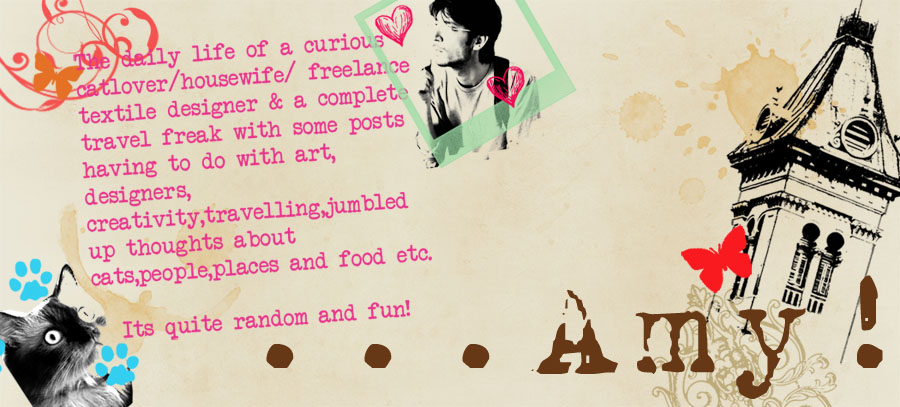
While learning about new textile techniques in art school and practising them i discovered batik was the one I was probably best at and absolutely loved experimenting with. The result swould often even surprise me! My favourite Batik creation is the screen I made for a project in the picture above. It features chinese temples. Since it is an oriental technique I felt an oriental theme would do well with it.
Many people would find this technique hard to work on as it requires alot of skill and practise to handle wax ...I realised that after burning my hands many times and also by usage of different kinds of tools to apply it (like brushes, tjanting etc) but once you have mastered the art of handling wax then there is no end to the different kinds of things you can come up with using this technique. There is tons of work being done with this technique all over the world. The photos featured in this blog were taken by a friend in a Sri Lankan Batik workshop. You can see in these pictures the process in its differnet stages. When speaking of the history of Batik one can't tell extacly where it originated from some say India and some say it originated from Java, Indonesia. The work "batik" (bateek) however, means "wax written" and its simplest description would be that its a way of producing a pattern on a fabric by making the design on part of the fabric with melted wax and dyeing the cloth. The wax which acts as a resist here would then prevent the dye from penetrating into the design and hence produce interesting results.
People have different formulae for the composition of wax. It is basically a mixture of Parafin and beeswax wax in a specific ration which helps the wax in holding the cloth and not give way to the dye. My favourite mode of handling it is basically with a brush but i tried my hand at the tjanting tool as well. As shown in the above picture it is a tool especially designed to hold small amounts of wax and keep it warm while let out only a streak of it through the attached snout. Interesting.! and also sound easy but i couldn't really manage to keep the wax constantly flowing from mine so I had to stick to the same ol' sable hair brush (which by the way is the best one to work with....don't even think of using a nylon one!)
A vat of melted wax
"Cold dyes" are basically used for this technique as your usual hot dyes would melt the wax. The concentration of the dye in the water and how strong the color is, also effects the design. It is often the brighter colored designs that look best in Batik.
A Batik artist in the above picture shows pretty good skills with tjanting.
Usually you will find Batik used in apparels and home textiles and also being sold as souvenirs. In SriLanka the batik designs usually depict the culture and their beliefs.
It is usually the brighter colors that make the most impact in batik designs.
A Batik shops selling different products.
The "Batik" technique is appealing to many but can be tried by only those who have the patience and don't give up too quickly as it require many tries before coming up with something you like!
For starters, the link http://www.craftown.com/batik.htm can prove to be helpful as it provides details of different steps of the process.
The book "Batik Inspiration" is so far the best book i've come across on this topic as it feature the most beautiful and inspiring designs by top Malaysian Batik designer and three traditional techniques on this process. You can purchase it online at http://www.batikinspirations.com/order.htm
Note: Apart from the first picture which shows a Batik screen made and photographed by me the rest of the pictures have been taken by a friend who visited Srilanka recently. You can view more of his photography at http://scorpion2kpk.deviantart.com/.










Nice. Batik really is one of the most exciting techniques in textile design.
ReplyDelete